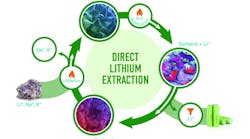Ohio is proposing stepping up the current regulations on handling waste with low levels of radiation from natural gas drilling in the Utica shale.
The tighter rules aim to enhance the coordination and control of state bodies for safe disposal in Ohio landfills of drilling muds, earthen materials and earthen materials contaminated with oil-based substances, state authorities said in a three-page fact sheet.
The proposed legislation was announced on Monday by the Ohio Department of Health, the Ohio Department of Natural Resources and the Ohio Environmental Protection Agency.
The 50-page proposal, the result of months of work among the three agencies, comes after local eco groups last December called for a tightening of the state laws on dealing with drilling wastes.
RELATED: Marcellus shale fracking threatens region's wastewater systems, researchers find
Environmental experts are mostly concerned that the waste from the drilling of natural gas could expose drillers and landfill workers to harmful radiation levels and that radiation waste could end up in leachate — the landfill liquids that usually go for processing to local sewerage treatment facilities before being discharged in Ohio streams. This means that unsafe levels of radiation could enter Ohio streams, although it would probably not present a risk to the general public, said Julie Weatherington-Rice, a senior scientist at Bennett & Williams Environmental Consultants and an adjunct professor at Ohio State University.
Much of the low-level radiation waste would be labeled naturally occurring radioactive material (NORM). Most of it consists of rocks, dirt and drilling cuttings and is exempt from state and federal regulations. It can be disposed of at the well sites. However, it must be shipped to landfills if it is contaminated with oil-based substances.
A smaller part of the drilling waste, including pipe scale and drilling muds, falls under the classification of technologically enhanced naturally occurring radioactive material (TENORM). Such drilling waste is subject to the Ohio Department of Health's regulations. The state's TENORM laws have existed since 1997 and are among the strictest rules in the United States.
The strengthened regulations aim to ensure that TENORM waste is properly labeled and safely dealt with in Ohio landfills, now that more of this waste will be disposed of as a result of increased oil and gas drilling activity in the state. However, the authorities could not forecast the volume of waste that will be affected by the tighter rules.
Such materials can enter landfills if the radiation levels of radium-226 or radium-228 do not exceed the 5 picocuries per gram limits imposed by the state. Drillers must do the testing of drilling wastes, and landfills can accept the shipped waste only after approving the testing results.
The rules are also valid for waste coming into Ohio from other states and for waste that will be shipped to solid-waste transfer facilities.
If the tests show radiation levels above the Ohio-allowed limits, drillers have three options: to ship the waste to low-level radiation landfills in the West; to ship the waste to a Michigan landfill that allows radiation levels of up to 50 picocuries per gram; or to blend the waste with clean dirt to reduce the radiation levels for the waste to be allowed to go into Ohio landfills, after clearance from the EPA and the Department of Health.
Under the proposed measures, the EPA director will be vested with the power to set up additional rules such as analyzing ground water and landfill liquids to properly handle low-level radioactive waste in landfills.
Earlier this year, the state carried out tests at Chesapeake Energy Corp. wells in Ohio, which showed only low radiation levels.


